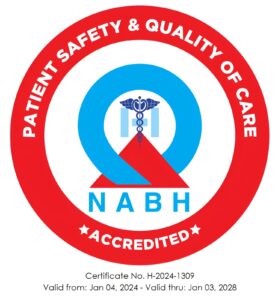
Email : info@gghospital.in | Phone : +91 99622 29940
Accelerated depreciation can result in higher tax deductions in the early years of an asset’s life. This can be beneficial for businesses that need to maximize their tax benefits in the short term. Another disadvantage of accelerated depreciation is that it can lead to higher bookkeeping and accounting costs. This is because businesses need to keep track of multiple depreciation schedules and calculate the depreciation expense for each asset separately. This can be time-consuming and may require the services of a professional accountant. The choice between accelerated and straight-line depreciation depends on the specific circumstances of each business.
The method chosen for depreciation can significantly impact a company’s financial statements and tax obligations. Through case studies, we can observe how different depreciation methods are applied in real-world scenarios, offering valuable insights into their practical implications. These methods not only affect the reported earnings but also influence management decisions regarding capital expenditures, asset replacement, and even investment attractiveness. The choice between straight-line and accelerated depreciation methods can thus shape the financial narrative of a company, influencing investment decisions, credit evaluations, and strategic planning. It’s a testament to the nuanced role that depreciation plays in straight line depreciation vs accelerated the realm of accounting and finance, where the method chosen aligns with a company’s broader financial strategy and objectives.
The accelerated depreciation method might make sense here, as the equipment will likely become obsolete quickly. Conversely, a real estate company might prefer straight-line depreciation for its long-term property investments, which depreciate more slowly. Choosing the right asset depreciation schedule is crucial for a company’s money strategy. Companies might use straight-line depreciation or go for accelerated depreciation for bigger early benefits. But they offer a sneak peek into a company’s financial strategy through its records. They play a big role in tax savings and influence how a company looks to investors.
Accelerated depreciation is any method of depreciation used for accounting or income tax purposes that allows greater depreciation expenses in the early years of the life of an asset. The best depreciation strategy depends on the specific needs and goals of each business. For businesses looking to maximize tax savings in the short term, accelerated depreciation may be the best option. However, businesses looking for consistent tax savings over the long term may benefit more from straight-line depreciation.
However, with Double Declining Balance, the first year’s depreciation would be $2,000 (20% of $10,000), decreasing each subsequent year. Straight-line depreciation offers a simplified and systematic approach to allocating the cost of an asset over its useful life. It is particularly suitable for assets whose value and utility do not significantly decline over time. However, it’s important for businesses to consider the nature of their assets and their usage patterns to determine if straight-line depreciation is the most appropriate method for their needs. Using straight-line depreciation, a company can plan for the future replacement of assets, as the method provides a clear picture of when the asset’s book value will reach its salvage value.
It provides a predictable expense deduction, aiding in smart asset lifecycle management. In short, Straight-line depreciation spreads an asset’s cost evenly across its life. In contrast, accelerated depreciation methods, like MACRS, allow more expenses early on. Straight-line depreciation is a simple and effective method of calculating depreciation that offers several advantages to businesses.
When businesses acquire assets, they must allocate the cost of these assets over their useful lives, a process known as depreciation. The method chosen for this allocation can significantly impact a company’s financial statements and tax liabilities. While straight line depreciation may not be the most sophisticated method, its ease of use and predictability make it a reliable choice for many businesses. It provides a steady approach to expense recognition, which can be particularly useful for long-term financial planning and analysis.
In the second year, only 4/15 of the depreciable base would be depreciated. As consumers, we all want to be sure that the products we purchase are worth our time, money, and… Repurchase agreements, commonly known as repos, are fundamental financial instruments in the world… Pipeline change management is the process of planning, implementing, and monitoring the changes… Next, you’ll estimate the cost of the salvage value by considering how much the product will be worth at the end of its useful life span.